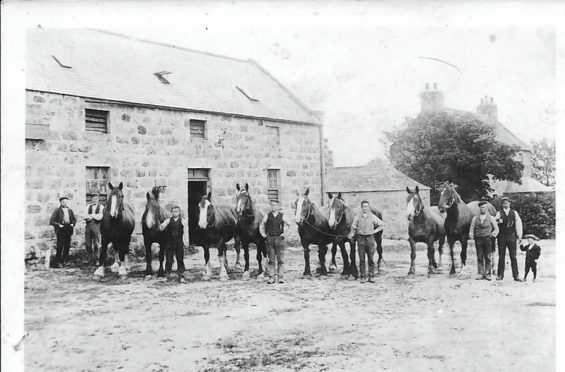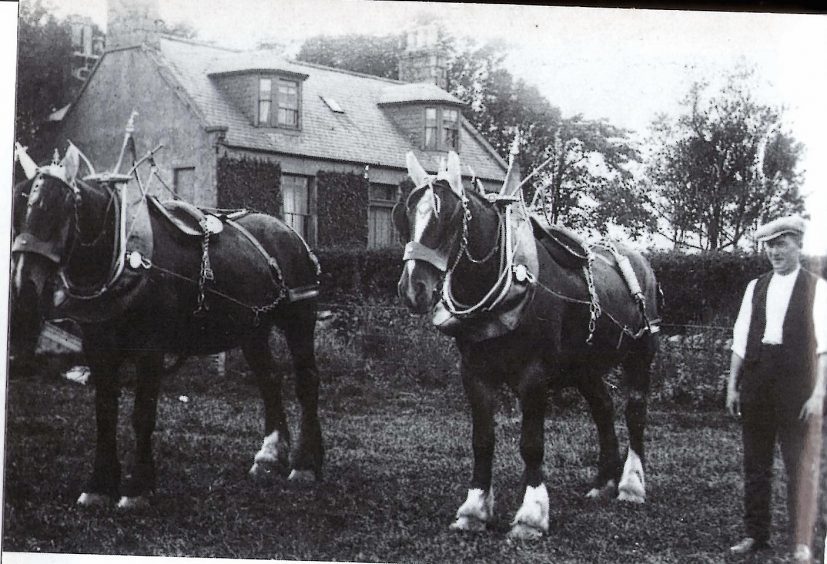It is said that the Clydesdale Horse Society came into being as a result of a meeting called by prominent breeder John M. Martin, of Auchendennan, near Loch Lomond.
It was held on the eve of the Glasgow Stallion Show on the last Tuesday of February 1877. The outcome of the meeting was to found a stud book for the breed based on the Coates Herd Book for Shorthorn cattle.
The formal creation of the society was listed as in June of that year. Prominent Shorthorn breeder Lord Dunmore canvassed heavily for the new society, recruiting 100 new members at a 10gn subscription fee which helped pay for the printing of a retrospective first stud book in December 1878.
However it was not all sweetness and light as some prominent Clydesdale breeders objected to formal stud books because it admitted all animals even inferior ones. One such person was Lawrence Drew, of the famous Merryton Home Farm Stud at Hamilton.
Drew’s standing as a Clydesdale breeder was high but the 1883 formation of his own Select Clydesdale Horse Society for Scotland did not last much beyond his death in 1884.
The official society grew and with so many heavy horses needed on farms and for carting in towns the popularity of the breed was high. Clydesdales were supreme in Scotland and were also popular in several counties of England as well as the Isle of Man and Ireland.
By the 20th century many were being exported to North America and to the antipodes. However it was the Great War which saw huge numbers leave for France.
This conflict saw the promotion of tractors for farm work but the heavy horse held its own, however motor lorries removed many from the streets of the towns.
In 1927 the society celebrated its 50th anniversary with the only surviving original member being John “Scotty” Clay who by then was a successful US cattle baron after starting as a farmer near Eyemouth in Berwickshire. Breed secretary at that time and also the editor of The Scottish Farmer magazine was the great Archibald MacNeilage who is said to be able to quote the breeding of most horses from his head. MacNeilage remained in office for more than 50 years until his death in 1931.
Another long-serving secretary was Fifer Robert Jarvis who held the post from 1938 until 1970. During World War II he and his wife worked late into the night to prepare each stud book for printing on time – something he achieved every year.
It was in the early years of the war that a boat load of Clydesdales being exported to the states was sent to the bottom of the Atlantic by a German torpedo. Ironically the same fate often befell the many lease-lend tractors that were making their way over here. Indeed it was the rapid mechanisation of farming during World War II that finally started to erode the power and popularity of the “Clydes” as the post war years saw their numbers wane drastically.
Thankfully we still have breeders and events that keep the breed at the forefront and their appearance always draw the crowds whether it is the sight of the big teams pulling brewers drays, or a pair at a ploughing match or one turned out in show harness. They always turn heads and still create debate.
The highlight for many is the Stallion Show organised by the Glasgow Agricultural Society. All the great breeders would show here and many regional agricultural societies would select stallions to travel round their districts to improve the stock of the local working horses. Stallions from Dunlop of Dunure, Kilpatrick of Craigie Mains, Kerr of Harviestoun, Templeton of Sandyknowe, Gilmour of Montrave, Picken of Torrs, and Sleigh of St John’s Wells.
At one time the same society held a summer show at the Scotstoun site in Glasgow. This was a great exhibition of all Clydesdale horses and Glasgow Corporation entered into the spirit by showing upwards of 60 geldings from their working fleet as late as 1946.
Even today with the numbers of horse a fraction of that in 1877 a Cawdor Cup win is still the ultimate accolade.

